How do red flags work in Formula 1?
Explore what is a red flag, how does it operate in Formula One.
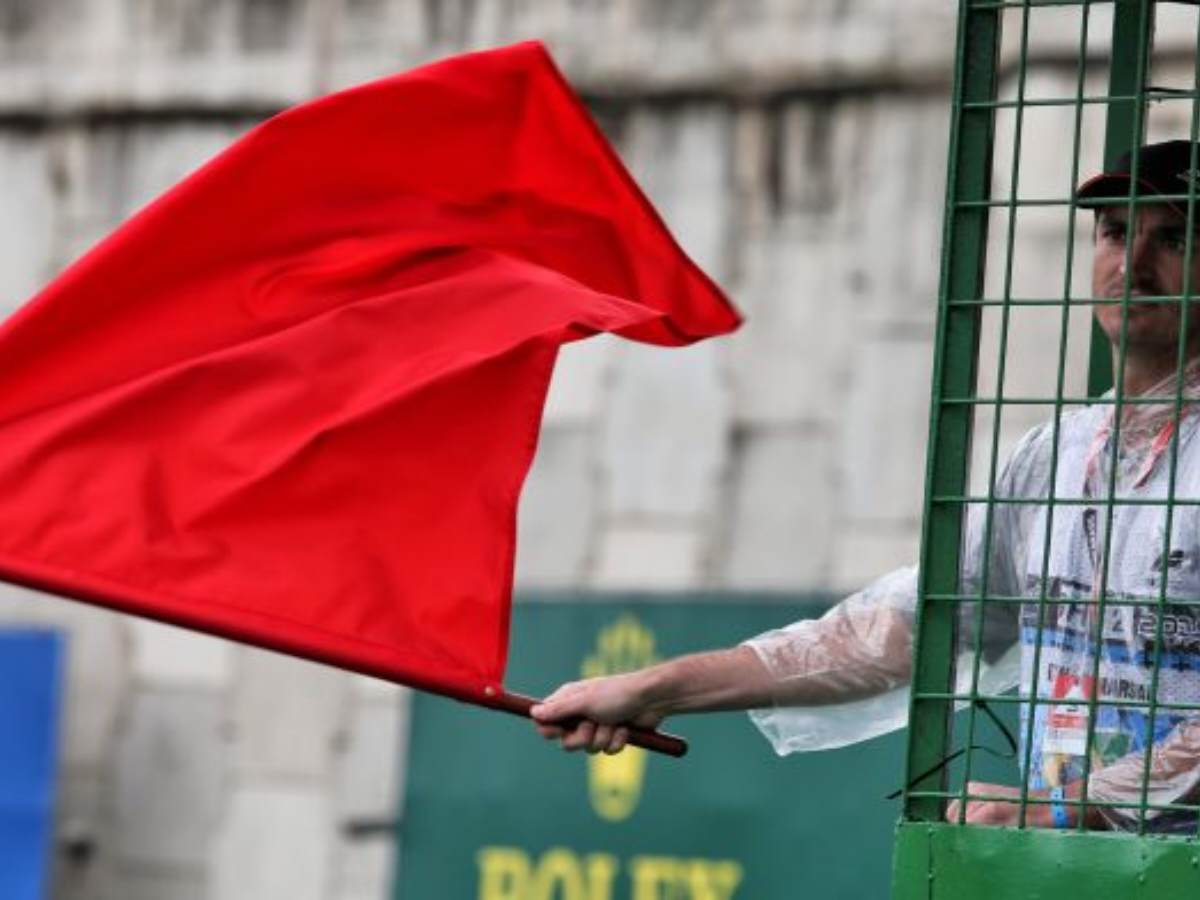
Red flag (Credits: GPBlog)
🔍 Explore this post with:
The world of Formula 1 is a place where speed is king and precision is everything. The sport is filled with heart-stopping moments, awe-inspiring achievements, and the constant pursuit of excellence. However, amidst all the excitement, certain warning signs can signal trouble ahead.
These red flags can be subtle or glaringly obvious, but they all have one thing in common: they are crucial indicators that something is amiss within a team or driver’s operation. Dive in and explore what red flags in Formula 1 are, how they can manifest, and what they can reveal about the state of play in this high-stakes, high-speed world.
Discover: F1 drivers’ height and weight on the 2023 grid
What is a red flag in F1?
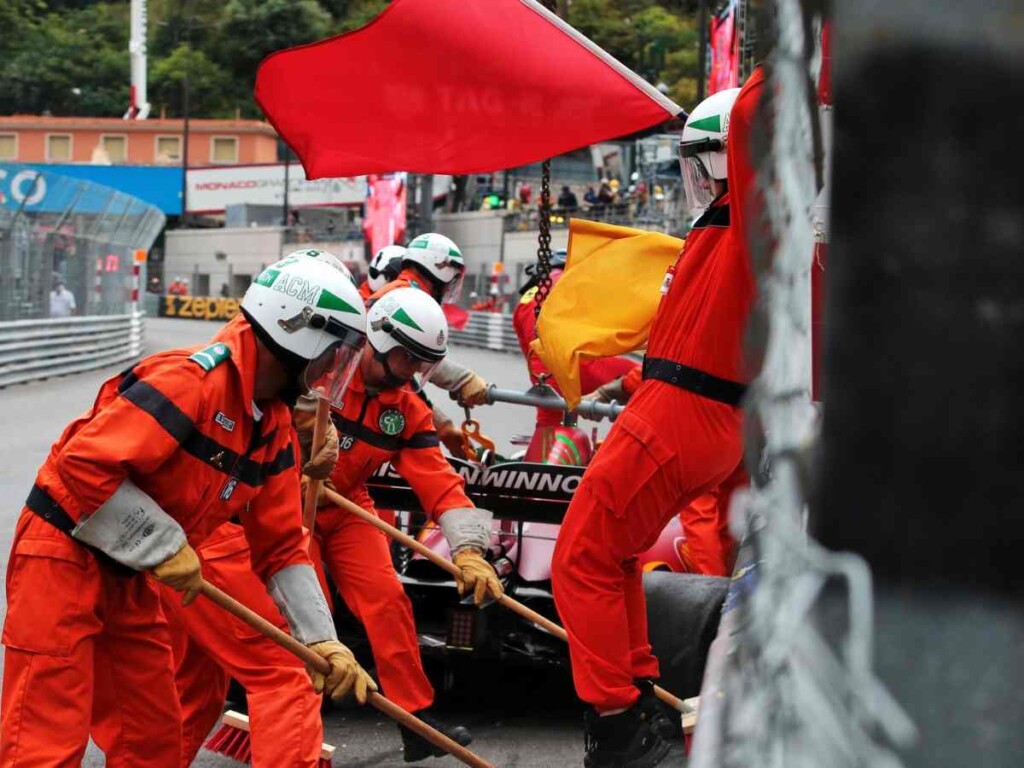
In Formula One, a red flag is used as a signal to indicate a stoppage or cancellation of a session, usually caused by an accident, poor track conditions, or debris on the circuit. The origin of the red flag dates back to F1’s inaugural season in 1950 when rain halted the Indianapolis 500, which was part of the championship at that time. Marshals stationed around the track display the flag, and a GPS marshaling system was introduced in 2007 to improve accuracy.
However, the term “red flag” in F1 has taken on a broader meaning beyond its original use. It now also serves as a warning sign for potential problems within a team or driver’s operation. These red flags can include a slow pace, unreliability, or questionable decision-making. The term’s expanded usage likely stems from its association with danger and caution, making it an intuitive descriptor for warning signs. As F1 has grown more competitive and high stakes, recognizing and responding to these red flags has become crucial for sports success.
How does the red flag work in F1?
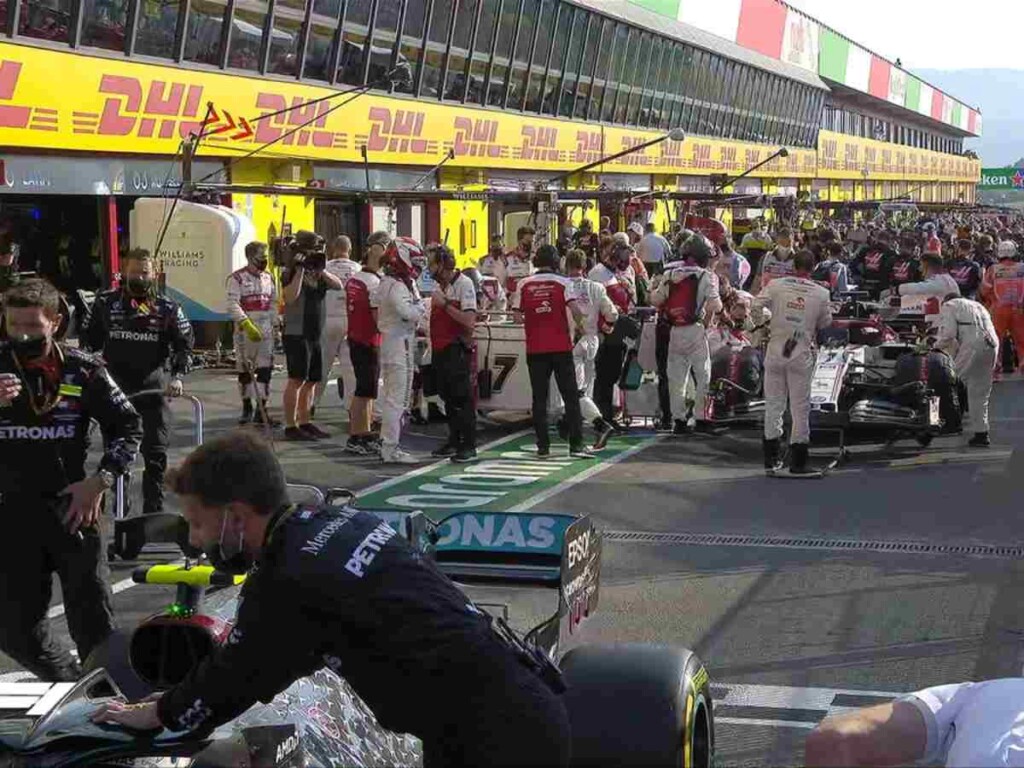
In Formula 1, a red flag clearly indicates that the session has been stopped, and all cars must immediately return to the pits at a reduced speed. The red flag is used when there is a significant danger on the track, such as an accident or debris that makes it unsafe to continue racing. During a race, the red flag may lead to a complete restart, whereas, in practice or qualifying, it may result in a delay or cancellation of the session. The primary objective of the red flag procedure is to ensure the safety of all drivers and personnel involved in the race, and the race officials strictly enforce it.
When a red flag is shown in an F1 race, all cars must line up behind the red flag line, and the race is suspended until the danger on the course has been eliminated. Race control determines the time to resume the race once the danger has been removed. The red flag indicates the suspension or stoppage of the session due to imminent danger to competitors, spectators, or poor weather conditions.
When the race comes to a stop, drivers are allowed to step out of the car and can stay in their respective garages. F1 also uses a GPS marshaling system to supplement the traditional marshaling flags. Marshals send flag signals directly to race control, circuit light panels, and a set of LEDs on the driver’s dashboard, which light up when the related flag color is waved. This advanced system enhances the accuracy and efficiency of flag signals during a race.
When is a red flag waved in an F1 race?
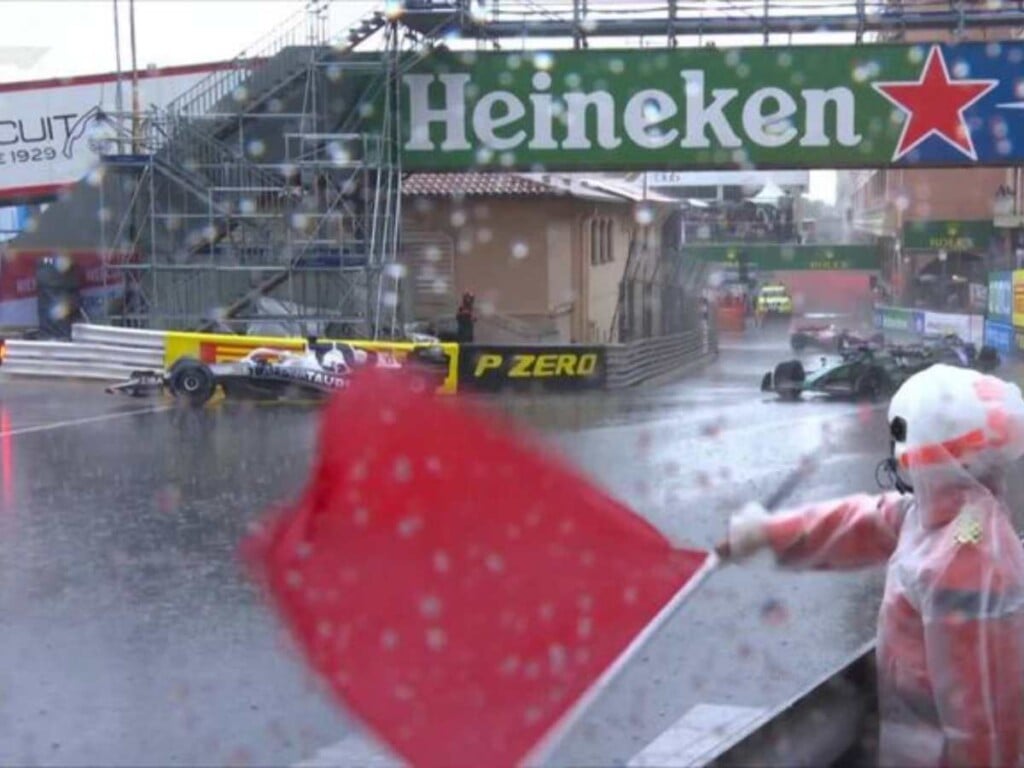
A red flag is an extremely serious signal in F1, reserved for only extreme circumstances. The race director may wave the red flag if there is a serious accident that poses a significant risk to drivers or marshals, if there is debris on the track that cannot be safely removed, or if weather conditions make it impossible to race safely. Moreover, the red flag may be displayed if a car stops on the track in a dangerous position or if there is a major mechanical failure on the circuit that cannot be resolved quickly.
Apart from these common reasons, there have been some unique situations where the red flag has been displayed. For instance, during the 1971 Canadian Grand Prix, the race had to be stopped because of heavy fog that made it impossible for the drivers to see the track. It was the second-ever F1 race where a red flag was waved. In another instance, the red flag was mistakenly shown at the 2000 Monaco GP due to a technical fault in the FIA computer, which resulted in a collision between Pedro de la Rosa and Jenson Button.
What happens on F1 track when a red flag is waved?
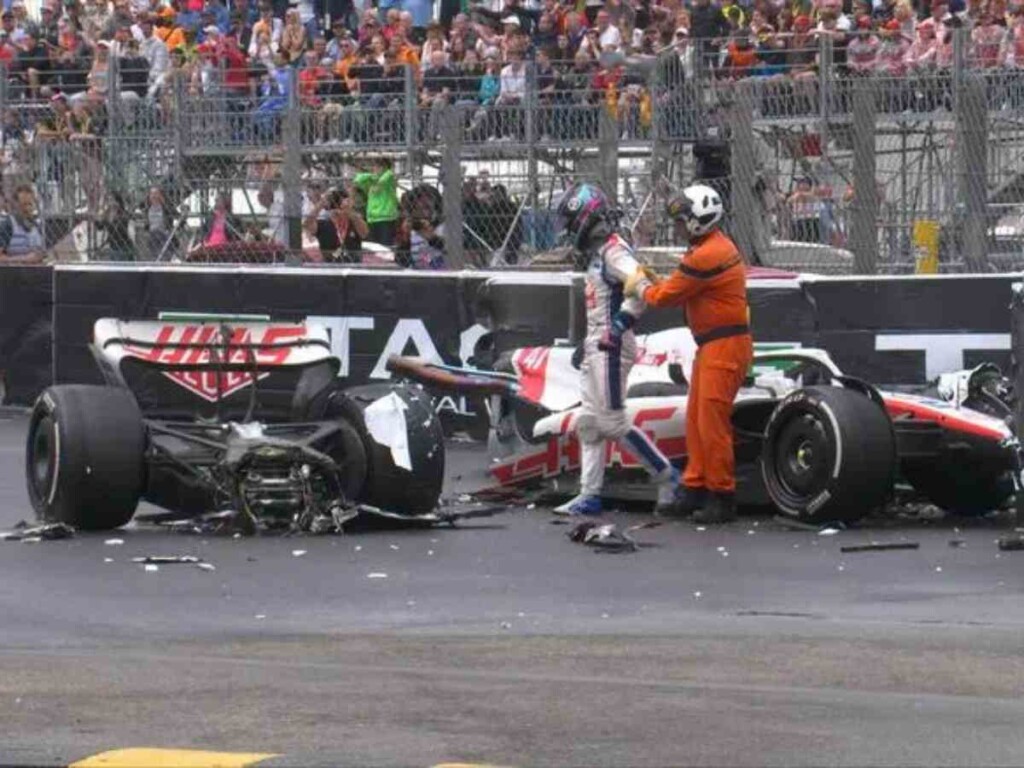
After a red flag is waved in an F1 race, the responsibility of controlling the situation falls on the stewards and marshals. The FIA takes charge of overseeing safety measures and ensuring the track is free of any hazards. A thorough investigation by the stewards is carried out to determine the cause of the incident and assess whether it’s safe to resume the session.
Once the stewards have determined it’s safe, the session can resume. However, before the race, all cars must line up behind the red flag line. Depending on the severity of the incident, the race may either continue from where it left off or be restarted entirely. Meanwhile, drivers can leave their cars and seek refuge in their respective garages.
Are red flags a common occurrence in sports other than F1?
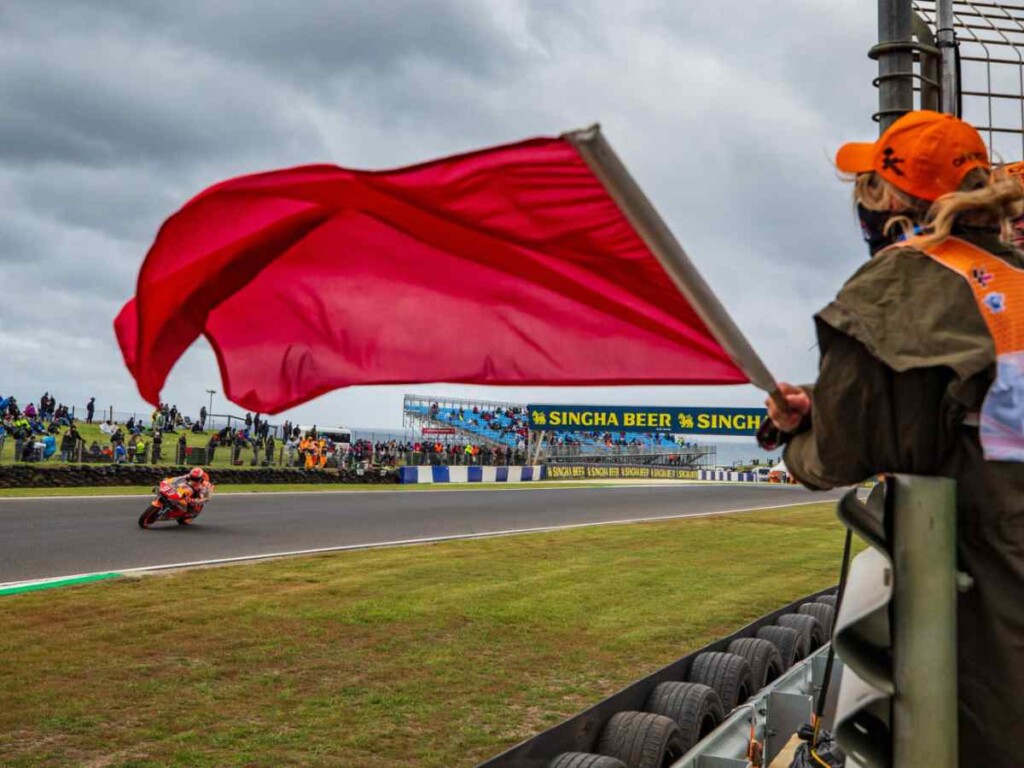
Red flags are not a rare sight in the world of motorsports. Apart from Formula 1, other racing events such as NASCAR, IndyCar, and MotoGP also adopt red flags. In these events, red flags are utilized to halt the race in cases where there is a potential threat to the safety of the drivers or spectators, or if the circuit is blocked or the conditions are deemed too perilous to continue.
However, Hill Climb racing is an exceptional case as it has a unique set of rules when it comes to the use of red flags. In this type of racing, the red flag may only be raised upon request to the clerk of the course. The Clerk of the Course may also authorize experienced Marshalls to deploy the red flag if the race must be stopped without any delay. The reasons for stopping the race in Hill Climb racing are also different, which include severe competitor or spectator injuries and large fires.
Which F1 race had the most red flags?

The Australian Grand Prix in 2023 claimed the title for the F1 race with the reddest flags. This race was a rollercoaster of emotions and safety concerns, and a lot of controversies too. The red flag was waved thrice during the race due to severe crashes and a damaged car on the track. The first red flag was thrown early after a major collision involving Williams’ Alex Albon, which required the immediate deployment of the Safety Car. The second red flag was raised when Haas’s Magnussen lost a wheel, creating chaos on the circuit. Finally, a dramatic restart after the second red flag led to the third red flag being waved. Despite all the chaos and the red flags, Max Verstappen displayed his prowess to take the race.
In Formula 1, a red flag is more than just a colored piece of cloth or a signal to halt the race. It is a crucial element that can mean the difference between life and death. F1 is a sport where the drivers push the boundaries of physics and human capabilities. They compete at breakneck speeds, and a slight misstep or miscalculation could lead to disaster. In such a high-stakes environment, safety is paramount, and the red flag plays a crucial role in ensuring it. The red flag is crucial in Formula 1 as it ensures the safety of drivers, marshals, and spectators.
Learn more:







